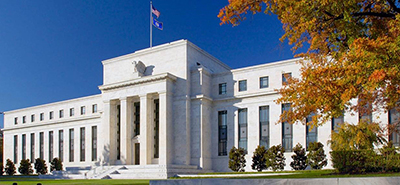
FOMC Cuts Rate 25 Basis Points; MBA Economist Weighs In

The Federal Reserve’s Federal Open Markets Committee cut the federal funds rate target by 25 basis points Sept. 17.
That marks the first drop since December.
MBA SVP and Chief Economist Mike Fratantoni noted the cut was “in line with market expectations.”
“The projections show that the median FOMC member anticipates two additional cuts in 2025 and one more in 2026, with the expectation that the job market will remain soft while inflation, while rising, won’t move too far before returning to the Fed’s 2% target,” Fratantoni said. “While the decision was not unanimous, with one dissent from the newest governor, Stephen Miran, the strong vote for the 25-basis-point cut suggests that members, while acknowledging that downside risks to the job market have increased, are not panicking about the state of the economy.”
“Mortgage rates, along with longer-term Treasuries moving in advance of this dovish shift in monetary policy, reached their lowest point for the year last week, spurring a strong jump in refinance activity,” Fratantoni continued. “If mortgage rates hold at these levels, origination activity will be boosted, both for homeowners who purchased in the last three years and can realize considerable savings at these rates, and for potential homebuyers, who now have one more reason to look for a home, in addition to increasing housing supply in many markets.”
Read the Federal Reserve Board’s full statement below:
Recent indicators suggest that growth of economic activity moderated in the first half of the year. Job gains have slowed, and the unemployment rate has edged up but remains low. Inflation has moved up and remains somewhat elevated.
The Committee seeks to achieve maximum employment and inflation at the rate of 2% over the longer run. Uncertainty about the economic outlook remains elevated. The Committee is attentive to the risks to both sides of its dual mandate and judges that downside risks to employment have risen.
In support of its goals and in light of the shift in the balance of risks, the Committee decided to lower the target range for the federal funds rate by 1/4 percentage point to 4 to 4‑1/4%. In considering additional adjustments to the target range for the federal funds rate, the Committee will carefully assess incoming data, the evolving outlook, and the balance of risks. The Committee will continue reducing its holdings of Treasury securities and agency debt and agency mortgage‑backed securities. The Committee is strongly committed to supporting maximum employment and returning inflation to its 2% objective.
In assessing the appropriate stance of monetary policy, the Committee will continue to monitor the implications of incoming information for the economic outlook. The Committee would be prepared to adjust the stance of monetary policy as appropriate if risks emerge that could impede the attainment of the Committee’s goals. The Committee’s assessments will take into account a wide range of information, including readings on labor market conditions, inflation pressures and inflation expectations, and financial and international developments.
Voting for the monetary policy action were Jerome H. Powell, Chair; John C. Williams, Vice Chair; Michael S. Barr; Michelle W. Bowman; Susan M. Collins; Lisa D. Cook; Austan D. Goolsbee; Philip N. Jefferson; Alberto G. Musalem; Jeffrey R. Schmid; and Christopher J. Waller. Voting against this action was Stephen I. Miran, who preferred to lower the target range for the federal funds rate by 1/2 percentage point at this meeting.
